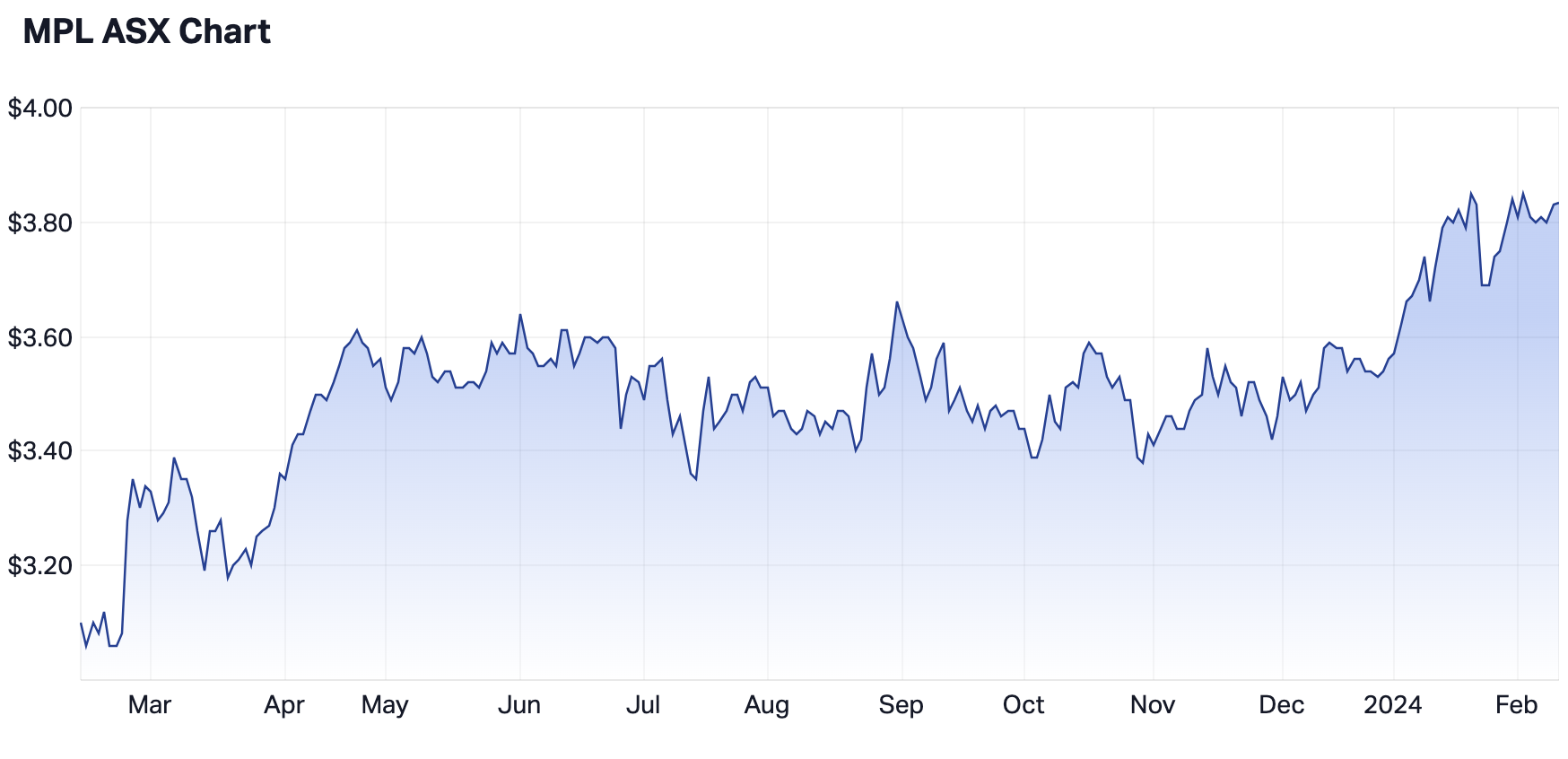Which is Goldman's pick of the health insurers: nib Holdings or Medibank?
You might think private health insurers have been challenged in recent years, including the COVID pandemic of 2020-2022 and elevated cost of living pressures more recently. And that’s true, up to a point. We’ve written about the insurance space more broadly in recent months, including general insurers QBE, Suncorp and Insurance Australia Group.
But what about ASX-listed private health insurers? Australia’s two largest PHIs are Medibank Private (ASX: MPL) and nib Holdings (ASX: NHF), which are set to deliver their half-yearly 2024 earnings on Thursday 22 February and Monday 26 February.
What to watch this reporting season
In a broad sense, Goldman Sachs analysts Julian Braganza and Brian Kim have positive top-line growth expectations for the PHI sector.
“Recent industry policyholder growth/participation has surprised to the upside, supported by population growth/policyholder givebacks, low rate increases and the impact of the adult dependent reform,” the analysts wrote in an equity research note on 9 February.
“However, we think medium-term growth could see some pressure from affordability, gradually higher rate increases (particularly into April 2025) and lower givebacks as claims inflation/utilisation takes effect.”
Premium rates, combined with the impact of claims, are among the most crucial factors for insurers. The Goldman Sachs analysts suggest we could see more variation in approved rate increases by companies, reflecting differing views around forward claims inflation.
“We think much of the permanent claims savings through COVID (rehab, respiratory, psychiatry) as well as prosthesis benefits are likely to be reflected in pricing going forward. We remind investors that the industry-approved rate increase was 2.9% for 2023 with MPL at 2.96% and NHF at 2.72%.”
In the context of economic challenges and cost-of-living pressures, they also note that consumers have overwhelmingly prioritised private health insurance above discretionary spending. This is reflected in the “downgrading” (customers reducing coverage levels to lower premium costs), which remains low for both companies:
- Medibank - 0.4% in FY24, with no meaningful shift revealed at its first-quarter 2024 update,
- Nib Holdings – reported downgrades of 0.1% in FY23,
- Medibank reported 0.5% in downgrades in FY23.
Costs have risen across the board for insurers in the inflationary environment, with Australian residents' private health insurance management expense ratios (MER) up 12.1% in FY2023, versus 10.7% in FY2022.
“We think NHF has some ability to wind back expenses to support net margins should claims trends deteriorate. MPL is targeting a stable to improving MER over time with $20 million of productivity savings targeted over FY24 and FY25 ($10 million each year). MPL’s MER at FY23 was 8%," write the Goldman Sachs analysts.
Both Medibank and Nib are benefiting from rising immigration, including the return of foreign workers and international students.
What to watch in the Medibank Private first-half result
The following are Goldman Sachs' estimates from Medibank's management and results:
- Underlying NPAT: $256.7 million
- Net profit after tax: $240 million
- Group operating profit: $316.9 million
- Health Insurance operating profit: $315.3 million
- Medibank Health operating profit: $27.4 million
- Group underlying gross margin: 15.2%
- Group underlying net margin: 8.0%
- Dividend: 7.2 cents per share
“In the absence of any significant bounce back in claims inflation/utilisation, we think MPL can maintain or slightly improve gross margins in resident insurance into FY24 and perhaps also into FY25 (depending on approved rate increases),” write Braganza and Kim.
“We think non-resident health insurance should see gross margins continue to expand providing a small contribution to group gross margins. All else equal, we see scope for net margins to expand slightly also benefiting from stable to improving expense ratios.”
Other key items they’re watching for in the earnings update include:
- Updates on Medibank Health's organic growth trends and acquisitions.
- Cybersecurity investigation and costs – flagged at MPL’s 1Q24 update.
- Resident policyholder market share
- Premium increases.
Broker rating and price target
Rating: NEUTRAL
Price target: $3.70, up from $3.56

On the positive side, Braganza and Kim highlight Medibank’s:
- defensive exposure to the private health insurance sector, which is experiencing favourable operating trends
- the claims environment (utilisation/inflation) remains manageable
- policyholder givebacks are supporting retention
- strong recovery in non-resident volumes – international students, workers and visitor arrivals.
On the other hand, negative factors include:
- MPL’s policyholder growth vs NHF
- Valuation,
- Some risks related to cyber security legal cases and investigations.
What to watch in the Nib Holdings first-half result
The Goldman Sachs analysts anticipate the following from NHF’s half-yearly earnings report:
- Net profit after tax: $100.3 million
- Underlying Operating Profit (UOP): $123.6 million
- Statutory Operating Profit: $115.6 million
- ARHI net margin: 7.4%
- Dividend: 14.4 cents per share
“We think NHF’s ARHI net margins will track toward slightly ahead of 7% into FY25 with 1H24 expected to be 7.4% impacted by premium rate deferrals in FY23 flowing into FY24 as a result of accounting standard changes. Strategically, we think this will also place NHF in a better position through its premium rate increase negotiations,” write the Goldman Sachs analysts.
They’re also watching for updates on Nib’s trends in its New Zealand business and international policyholders.
Broker rating and price target
Rating: BUY
Price target: $8.50, up from $8.40

Key positives in Goldman Sachs's investment thesis for NHF include:
- defensive exposure to the private health insurance sector, which is experiencing favourable operating trends,
- the claims environment (utilisation/inflation) remains manageable,
- strong recovery in non-resident volumes - international students, workers and visitor arrivals.
“We currently have a preference for NHF in this space, reflecting strong underlying top-line growth through policyholder growth and premium rate increases, greater diversity of earnings outside of regulated resident health insurance, and valuation appeal,” write Braganza and Kim.
1 topic
2 stocks mentioned

